Lore
What was the War for the Stepstones in House of the Dragon?
King’s Landing versus The Triarchy.
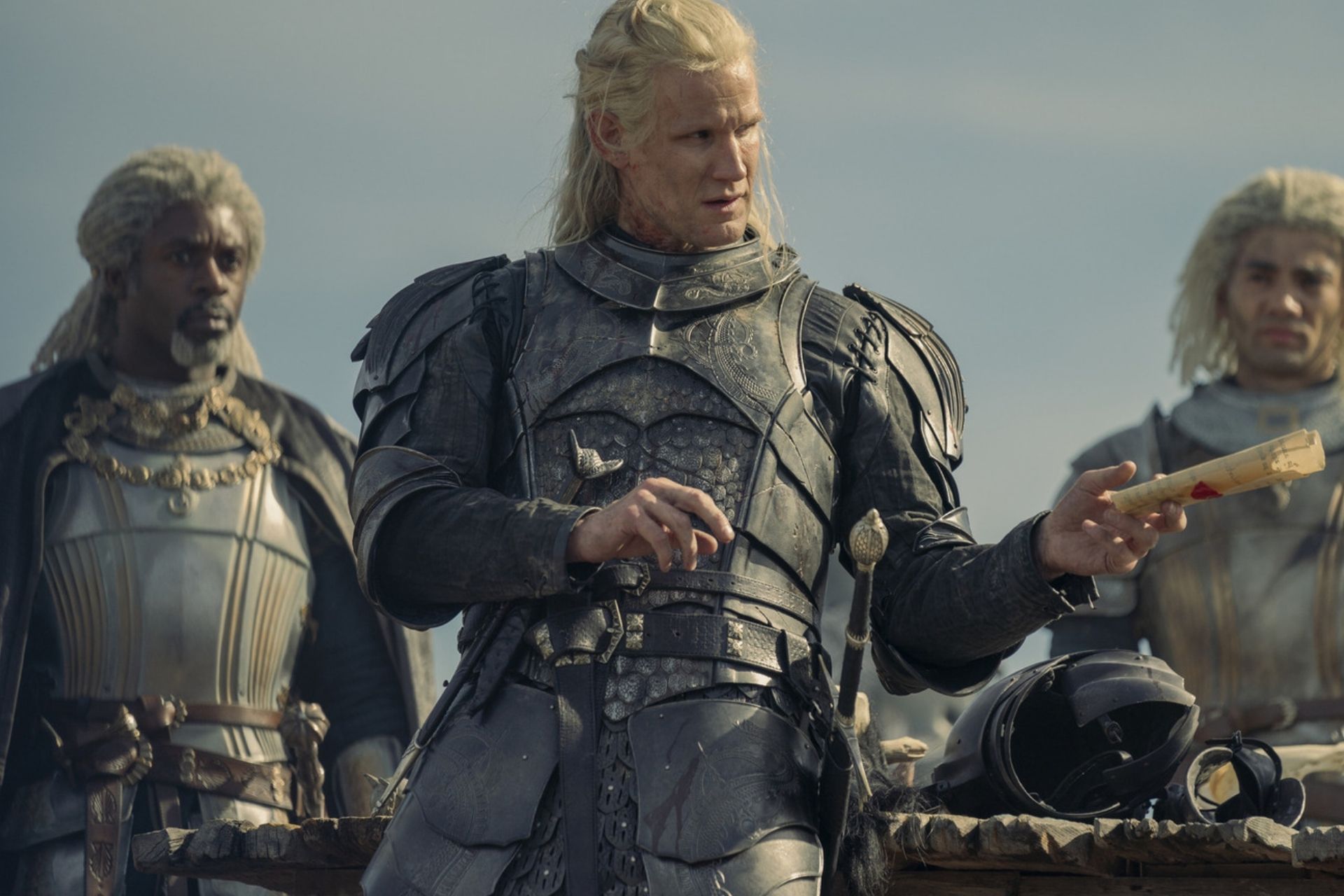
The War for the Stepstones is a significant conflict in the world created by George R R Martin. It involves power struggles over the Narrow Sea’s trade routes. This war connects key events that occur in House of the Dragon, a prequel to Game of Thrones.
The Stepstones, a chain of islands in the Narrow Sea, hold strategic importance for trade between Westeros and the Free Cities. The conflict over these islands serves as a backdrop for critical alliances and betrayals. The story’s events shape the relationships between major houses.
The narrative centers on Prince Daemon Targaryen and Lord Corlys Velaryon’s fight against the Triarchy. These events are central to the ongoing tension between Westeros and the Free Cities.
Daemon Targaryen’s quest for power and Corlys Velaryon’s stakes in controlling trade routes drive much of the action. The struggle for dominance in the Stepstones also reflects the broader conflicts in Westeros history. The clash between these forces influences the region’s stability.
The story is richly detailed in both the books and the show. It expands on the world-building that George R R Martin is known for. The war connects to broader themes in the Targaryen legacy and the battles for control in the Narrow Sea. This article covers everything we know about the War for the Stepstones.
Read More: 10 details you might have missed in the new House of the Dragon trailer
What happened in the War for the Stepstones?
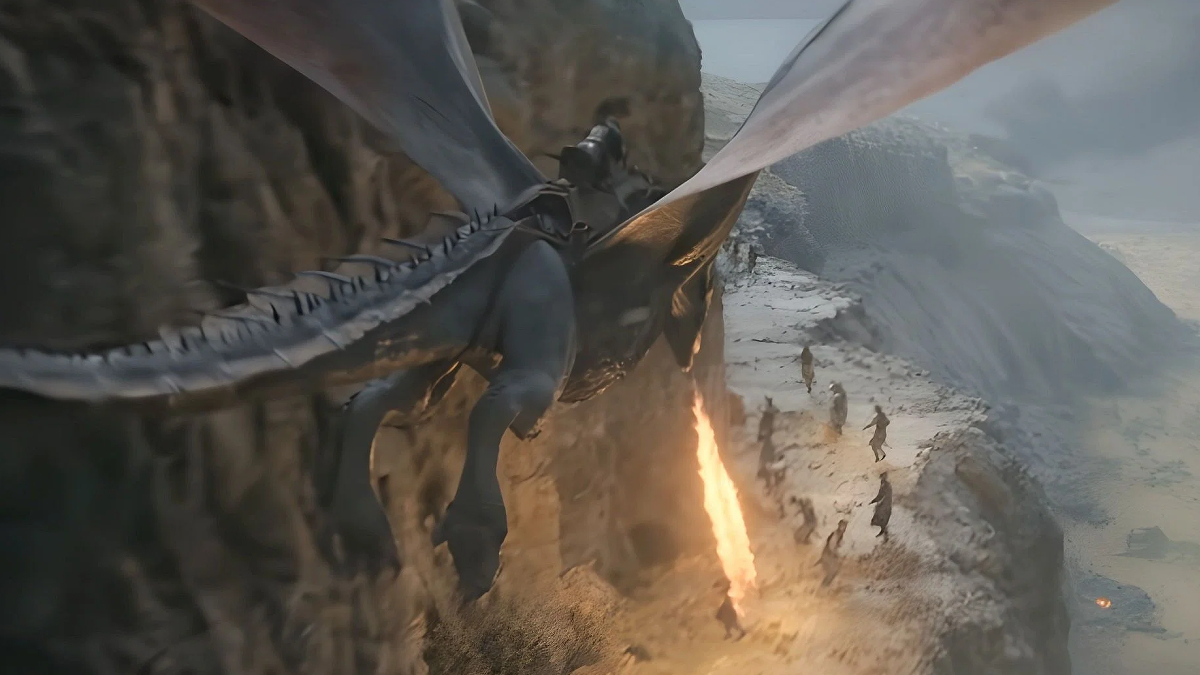
Credits: HBO
The War for the Stepstones was a conflict for control of a chain of islands in the Narrow Sea. These islands, located between the Broken Arm of Dorne and the Disputed Lands of Essos, became the focus of intense battles. Corlys Velaryon expressed frustration over the loss of four ships, including one bearing his banner.
The Stepstones held no intrinsic value but controlled essential sea lanes connecting Westeros and the Free Cities. Pirates frequently used the islands as a base until the Triarchy—a coalition of Myr, Lys, and Tyrosh—drove them out. The Triarchy soon began raiding Westerosi ships traveling through the region, sparking conflict with House Velaryon.
House Velaryon, possessing the largest fleet in Westeros, launched a private war to oppose the Triarchy’s dominance. Corlys Velaryon joined forces with Prince Daemon Targaryen. Together, they led land and naval campaigns to reclaim the islands and protect crucial trade routes.
In the books, the war involved coordinated land and sea battles against the Triarchy. Daemon Targaryen commanded ground forces, while Corlys Velaryon used his fleet to secure the waters. Their combined efforts sought to weaken the Triarchy’s hold and restore safe passage for Westerosi merchants through the Narrow Sea.
The show also depicts escalating tensions in the Stepstones. Both sources highlight the strategic importance of controlling the islands. Securing the Stepstones allowed control over trade routes and reduced disruptions caused by the Triarchy’s raids. The conflict became a prolonged struggle between the Triarchy and Westerosi forces led by Daemon and Corlys.
Read More: Biggest Moments from House of the Dragon Season 2 Finale
In the show
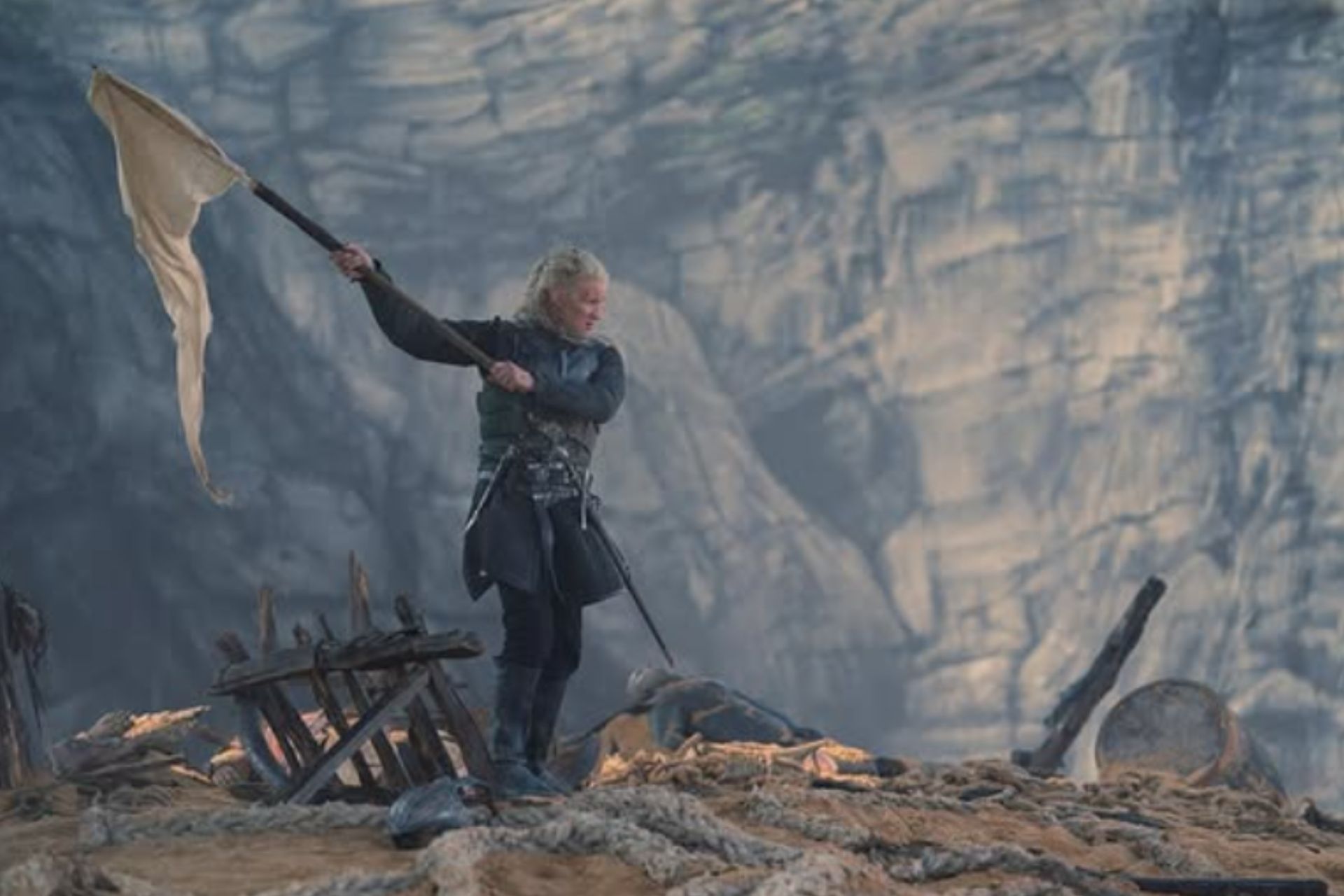
Credits: HBO
The Prelude to the War
The Triarchy was an alliance between the Free Cities of Myr, Lys, and Tyrosh, formed in 112 AC. They quickly turned westward and conquered the Stepstones under the leadership of Craghas Drahar, known as the Crabfeeder. They eliminated pirate factions in the region, initially earning approval from Westeros.
Corlys Velaryon grew concerned about the Triarchy’s growing control over the Stepstones. He feared losing access to shipping lanes, which could harm his wealth and influence. Six months later, the Triarchy began attacking Westerosi ships, sinking four, including one from the Velaryon fleet.
Corlys urged King Viserys to declare war, but the king delayed, fearing the realm was unprepared for conflict. Viserys preferred building alliances with Pentos and Volantis before acting. Frustrated, Corlys returned to Driftmark and invited Prince Daemon Targaryen to join him in an independent campaign.
The Siege of Bloodstone
In 115 AC, three years after the war began, Velaryon forces besieged Bloodstone, a key Triarchy stronghold. Daemon Targaryen rode Caraxes to the island while Velaryon troops launched an assault. The Velaryon forces suffered a defeat, with survivors captured and executed by Craghas Drahar.
Daemon retaliated by attacking the Triarchy’s forces at night with Caraxes. The dragon burned soldiers on the beach, forcing them to retreat into caves. The Triarchy countered with flaming arrows, wounding Daemon and forcing him and Caraxes to retreat. The conflict continued to drain Velaryon resources and manpower.
By Prince Aegon’s second nameday, the war was taking a toll. Vaemond Velaryon requested aid from King Viserys. Although initially reluctant, Viserys sent reinforcements, persuaded by his wife. The new forces brought a letter to Daemon, which he dismissed before planning a bold strike on Bloodstone.
Daemon’s Decisive Battle
Daemon approached Craghas Drahar, pretending to surrender by waving a white flag. He used the deception to get close, launching a sudden attack. Daemon fought Craghas’s men, distracting them while Velaryon forces landed undetected.
Laenor Velaryon rode Seasmoke, attacking the Triarchy forces from the skies. The combined assault forced Craghas to retreat into a cave. Daemon pursued him and emerged later with the severed upper half of Craghas Drahar, ending his rule over the Stepstones.
Daemon’s victory secured temporary control of the Stepstones. He crowned himself King of the Narrow Sea. However, the region remained unstable, and the war’s effects lingered for years.
Aftermath and Continued Fighting
In 126 AC, ten years after Daemon’s initial victory, the Triarchy allied with Dorne to retake the Stepstones. They returned with renewed forces and reports of a Tyroshi general leading their efforts. The fighting resumed as Westeros struggled to maintain control.
Despite setbacks, Velaryon forces eventually defeated the Triarchy again. They garrisoned the islands and fortified key positions to hold the region. Control over the Stepstones granted significant income from customs and trade routes.
By 132 AC, fighting erupted once more, leading to heavy losses. Corlys Velaryon was severely injured in an ambush. Despite the challenges, the Velaryon forces prevailed, driving the Triarchy from the Stepstones. Corlys later declared the Narrow Sea under Rhaenyra Targaryen’s control during the Dance of the Dragons.
Read More: Here is why Jon Snow owes his life to Lyanna Mormont of Bear Island
In the books
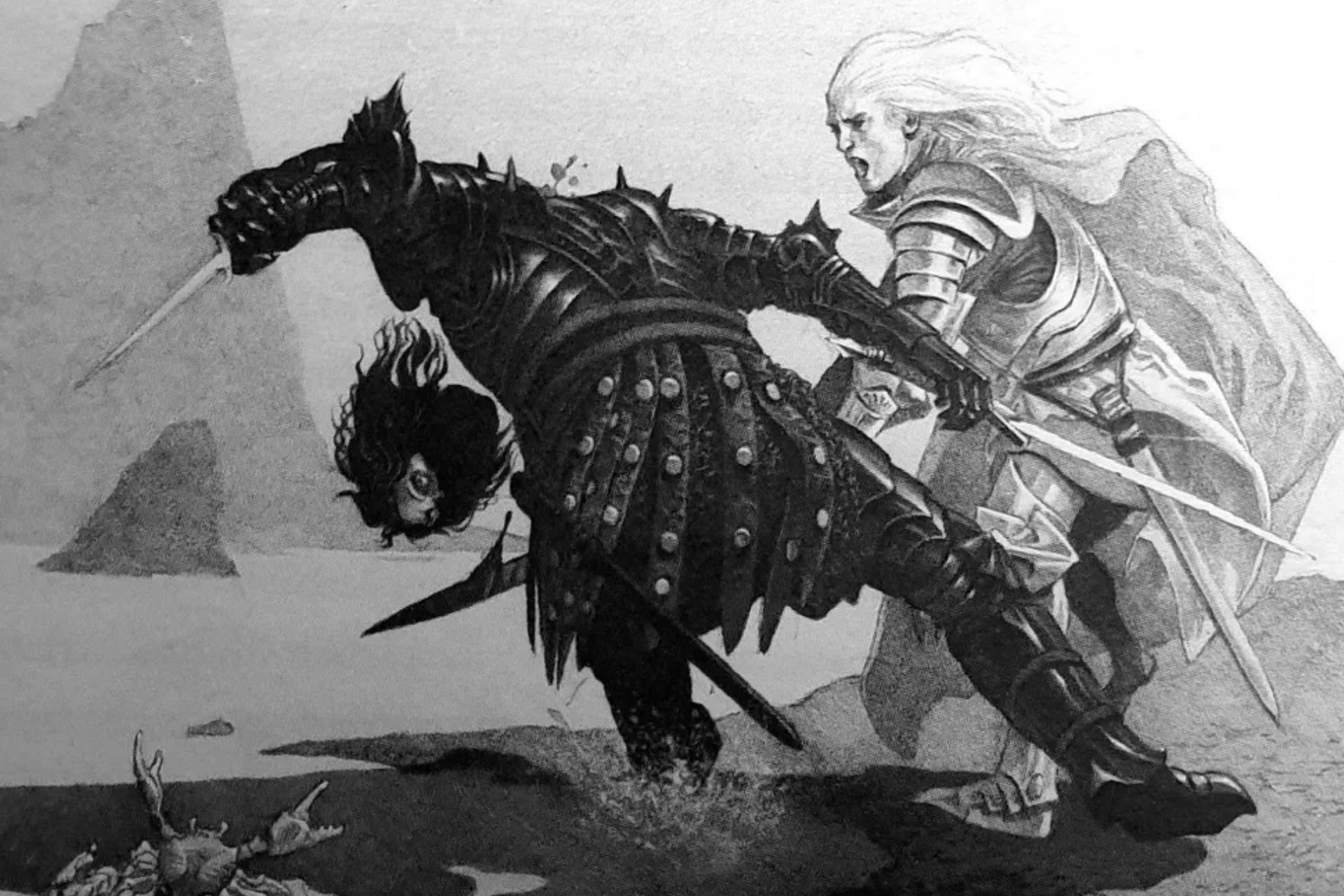
Credits: Douglas Wheatley
The Rise of the Triarchy
After defeating Volantis in 96 AC, the Free Cities of Lys, Myr, and Tyrosh formed the Triarchy. They invaded the Stepstones to eliminate outlaws and pirates who had established themselves on the islands. Initially, the Seven Kingdoms welcomed their efforts, as they brought order to the region.
The Triarchy soon imposed high tolls on trade routes in the Narrow Sea, angering Westerosi merchants and nobles. Lord Corlys Velaryon of Driftmark, known as the Sea Snake, was particularly aggrieved. He relied heavily on these trade routes for his wealth and influence. The tolls strained relations between Westeros and the Triarchy.
Meanwhile, Prince Daemon Targaryen sought to establish his own kingdom after King Viserys I Targaryen refused to name him heir. Daemon allied with Corlys Velaryon to wrest control of the Stepstones from the Triarchy, also known as the Three Daughters.
Daemon’s Campaign in the Stepstones
In 106 AC, Daemon Targaryen invaded the Stepstones riding his dragon, Caraxes. Corlys Velaryon commanded the Velaryon fleet, while Daemon led an army of sellswords, landless knights, and adventurers. Despite being outnumbered, they won several victories against the Triarchy’s forces over the next two years.
Daemon killed Craghas Drahar, the prince-admiral of Myr, in single combat with his sword, Dark Sister. This victory marked a turning point in the war. Viserys supported Daemon’s campaign with gold, allowing him to sustain his forces. By 109 AC, Daemon’s armies controlled most of the Stepstones.
Daemon crowned himself King of the Stepstones and the Narrow Sea. Corlys Velaryon presented him with the crown, symbolizing their victory. The Velaryon fleet maintained dominance over the region’s waters, securing naval supremacy for their campaign.
The Counterattack and Daemon’s Withdrawal
In 110 AC, the Triarchy launched a counterattack under Racallio Ryndoon, aided by Dornish forces. The renewed conflict forced Daemon’s armies to defend against coordinated assaults from both the Triarchy and Dorne. Fighting continued into 111 AC, straining Daemon’s ability to hold the region.
Daemon briefly withdrew to King’s Landing for six months to address personal matters and seek support. Despite his return, the combined forces of the Triarchy and Dorne made it difficult to maintain control over the islands. The alliance against Daemon significantly weakened his position.
In 115 AC, Daemon abandoned the Stepstones after learning of Lady Rhea Royce’s death. He attempted to claim her inheritance in the Vale of Arryn but failed. Instead, he married Laena Velaryon, Corlys’s daughter, and shifted his focus away from the war.
The End of the Sellsword Kingdom
After Daemon’s departure, the Stepstones fell into chaos. Several other men, including Racallio Ryndoon, declared themselves Kings of the Narrow Sea. The Triarchy and Dorne continued their alliance, eventually ending the short-lived sellsword kingdom Daemon had created.
From 131 AC to 134 AC, the Daughters’ War saw the final collapse of Daemon’s kingdom in the Stepstones. The Triarchy reasserted control, eliminating the remaining factions vying for dominance. The Stepstones returned to a contested and unstable state, with no single power able to hold the islands.
Despite his initial success, Daemon’s efforts to rule the Stepstones ultimately failed. His departure and the rise of other claimants marked the end of his influence in the Narrow Sea. The region remained a volatile battleground for years to come.
Key figures
- Prince Daemon Targaryen
- Lord Corlys Velaryon
- Craghas Drahar (The Crabfeeder)
- Racallio Ryndoon
- Laenor Velaryon
Aftermath
- Daemon briefly ruled the Stepstones as King of the Narrow Sea.
- The Triarchy, allied with Dorne, reclaimed the Stepstones after Daemon’s departure.
- The region’s instability continued to disrupt trade in the Narrow Sea.
- The Velaryon fleet regained temporary dominance but suffered heavy losses.
Quotes
“In the Stepstones, my enemies learned to run and hide when they saw Caraxes’s wings or heard his roar but they had no dragons of their own.”
–Daemon Targaryen to Rhaenyra Targaryen in Fire and Blood
“Four ships have now been lost. The last one was flying my banner. The Stepstones have now grown into a conflagration, yet you sit here and dither about court business.”
–Corlys Velaryon in House of the Dragon
Quick Answers
What was the War for the Stepstones?
The War for the Stepstones was a conflict between the Triarchy (an alliance of Myr, Lys, and Tyrosh) and forces led by Prince Daemon Targaryen and Lord Corlys Velaryon. The war aimed to control the Stepstones, a chain of islands in the Narrow Sea. (Books and show)
Who led the Westerosi forces during the war?
Prince Daemon Targaryen led the land forces with his dragon, Caraxes, while Lord Corlys Velaryon commanded the Velaryon fleet. (Books and show)
What happened to Craghas Drahar, the Crabfeeder?
Daemon Targaryen killed Craghas Drahar in single combat during the campaign, securing a major victory for the Westerosi forces. (Books and show)
Did Daemon rule the Stepstones? If so, for how long?
Daemon briefly ruled the Stepstones as King of the Stepstones and the Narrow Sea, crowned by Corlys Velaryon. His rule ended when he abandoned the islands to pursue other ambitions. (Books and show)
Why were the Stepstones important?
The Stepstones controlled vital trade routes in the Narrow Sea, connecting Westeros to the Free Cities. Whoever controlled the islands could impose tolls and dominate regional commerce. (Books and show)
Read More: Who is Sharako Lohar in House of the Dragon
-

 Interview6 days ago
Interview6 days agoHouse of the Dragon showrunner teases new major characters in Season 3
-
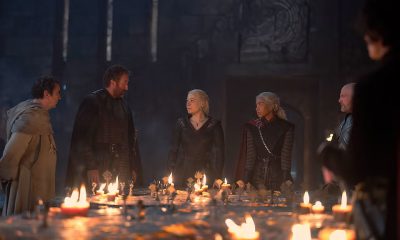
 Filming5 days ago
Filming5 days agoHouse of the Dragon begins Season 3 production and new cast members announced
-

 News4 days ago
News4 days ago“Get yo work!”: The Boys star Laz Alonso reacts after finding out House of the Dragon season 3 has just started filming
-

 Interview3 days ago
Interview3 days agoHouse of the Dragon showrunner felt “disappointed” with George R.R. Martin’s complaints with Season 2
-

 Interview1 day ago
Interview1 day agoCasterly Rock and Highgarden will play a key role in The Winds of Winter
-

 Interview4 hours ago
Interview4 hours agoHouse of the Dragon Season 3 will cover 4 major events from Fire & Blood









